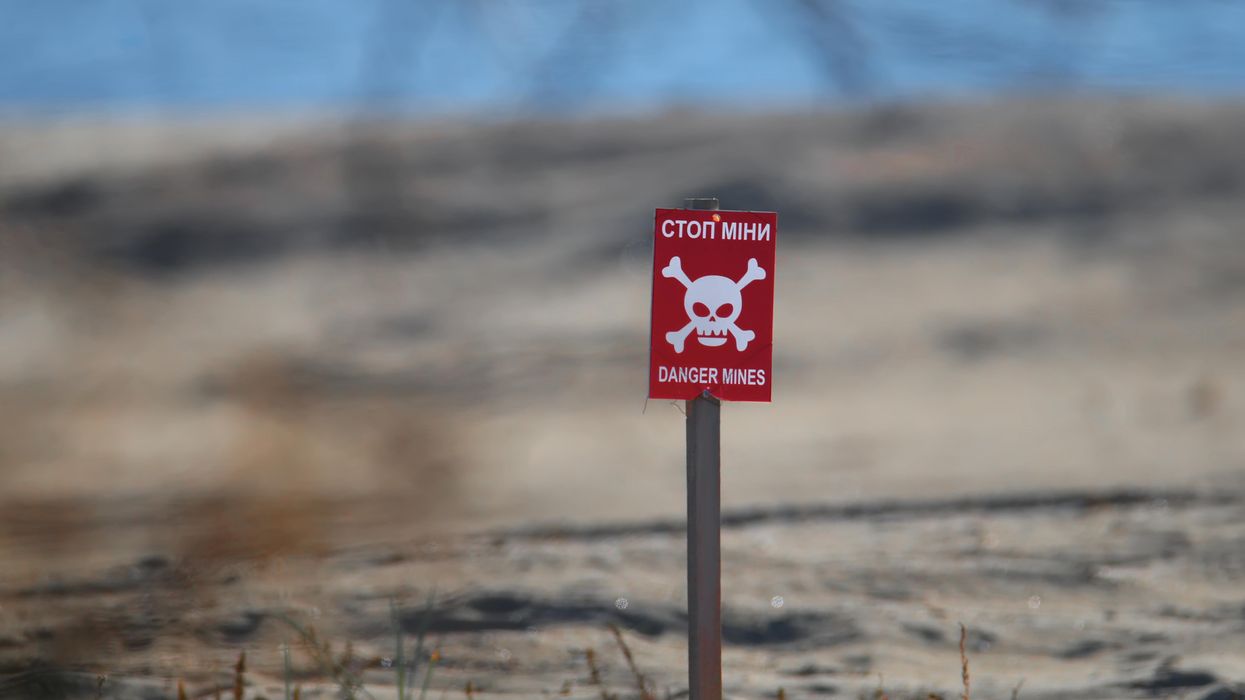The Bunker appears originally at the Project on Government Oversight and is republished here with permission.
Drones vs. dogma
You could deduce a war going on high overhead last week as the Pentagon hemmed and hawed over how to keep the aerospace edge that it has viewed as its property since World War II. As outside experts warned of the U.S. losing its grip on the sky because it isn’t keeping pace with the drone revolution, Russia was probing NATO’s eastern flank. The alliance bolstered security following at least 19 drone incursions over Poland September 10. “Russia is likely attempting to gauge both Poland’s and NATO’s capabilities and reactions in the hopes of applying lessons learned to future conflict scenarios with the NATO alliance,” the independent Institute for the Study of War said. Gulp.
Despite spending billions on its own drones, the Pentagon is ill-prepared to defend its forces against such enemy aircraft, a report (PDF) from the Center for a New American Security concludes. “After decades of air dominance and a near-monopoly on precision strike, the United States now faces a dramatically different, more hostile world as the proliferation of cheap drones has democratized mass precision fires,” says the report, released the same day Russia poked Poland. “It is likely that in any future conflict, drones will pose an unavoidable threat to American forces,” authors Stacie Pettyjohn and Molly Campbell add.
“All too often,” the report says (PDF), “U.S. forces use exquisite precision-guided missiles worth hundreds of thousands if not millions of dollars apiece to destroy cheap drones.” Not gonna work.
Unfortunately, the Defense Department is following its usual path to deal with this latest threat: spending like there’s no tomorrow. Or rather, like it’s still yesterday.
It remains business as usual for the U.S. military: Lockheed, the Department of Defense’s biggest contractor, was publicly salivating over its push to turn its troubled F-35 into a Ferrari. Boeing has been boasting that its yet-to-fly F-47 fighter is likely to fly sooner than anticipated. The Air Force hailed the first flight of Northrop’s second B-21 bomber from its California plant on September 11. And the service is spending $8 billion beefing up Lockheed’s F-22 fighter fleet.
Yet all of these aircraft require humans in the cockpits, with all the range, cost, and safety complications such carbon-based cargo carries. The swarming warnings on what future wars will look like are increasingly drone-centric. A wide-awake Pentagon, not welded to the past, needs to divert more of its spending on yesterday’s weapons to come to grips with tomorrow’s threats.
Throw-weighting good money after bad…
Speaking of spending money on yesterday’s weapons, the Air Force has acknowledged it can keep its fleet of ground-based intercontinental ballistic missiles in service until 2050. That may be necessary, because the service has run into problems developing the replacement it says it needs.
“The Air Force reported to Congress in 2021 that Minuteman III would reach the end of its service life in 2036,” the Government Accountability Office said in a September 10 report on the ICBM fleet. “Now, facing delays to Sentinel, the Air Force is evaluating options to continue operating Minuteman III through 2050.”
Yikes! The Minuteman III was first deployed in 1970, when the U.S. military was waist deep in the big muddy of Vietnam. If deployed until 2050, they will have been standing guard for 80 years — four times longer than the war in Afghanistan.
The Pentagon largely blames the delays — and an eyewatering 81% hike in the missile fleet’s price tag, to $140.9 billion — on the service’s pie-in-the-dirt scheme to reuse much of the current ICBMs’ ground-based infrastructure for the new missiles.
But as the current ICBM fleet ages, and its replacement grows ever more costly, there is another option. The land-based ICBM force is the least-valuable leg of the nation’s nuclear triad, which also includes submarine-launched missiles and bombers. It is beyond ripe for amputation.
But old habits die hard. The Pentagon is addicted to the Sentinel, bolstered by lawmakers whose states are home to the ICBM fields and the missile makers. So, count on this nuclear madness continuing until we’re broke, reduced to ashes, or both.
Another flubbed Air Force procurement
The Air Force Academy’s strikingly modern Cadet Chapel in Colorado Springs, Colorado, doesn’t have much in common with the service’s drones and missiles. Except that its cost, like theirs, is rising faster than a 4th of July firework.
The Air Force shut down the 1962 chapel, largely to fix its leaky aluminum roof and the resulting water damage, in 2019. It planned on spending $158 million and wrapping up the job in 2022. It built a “cocoon” around the 14-story structure so weather wouldn’t slow down the effort. But there were supposedly unanticipated problems — like asbestos — that recently have driven its cost to $335 million and its completion to 2028. That’s a 112% cost increase and a six-year delay.
It’s a too-typical S.N.A.F.U. — Situation Normal: Air Force Unknowns — that’s encoded in the service’s DNA. It mirrors the kind of wishful-thinking woes the Air Force is having with its Sentinel ICBM program cited above. (“Let’s reuse the missile silos!” “What asbestos?”). These are basic building-block oversights that wouldn’t be tolerated in the real, non-military world. That’s why it’s taking twice as long to plug the leaks in the chapel’s roof as it did to rebuild the Notre Dame cathedral in Paris following its devastating 2019 fire. And why has the cost of the chapel’s repairs doubled? “The high costs have been driven by the complex design of the building,” Mary Shinn of the Colorado Springs Gazette reported last year.
Bingo! Pretty much like everything else the Air Force designs and builds.
Here’s what has caught The Bunker’s eye recently
President Donald Trump’s advertised $175 billion “Golden Dome” missile shield will likely cost about $3.6 trillion if it is going to be as robust as Trump promises, defense-budget guru Todd Harrison of the conservative American Enterprise Institute wrote in a September 12 analysis.
The Pentagon has hired a contractor to begin work on bettering its biggest bunker buster following their use against buried Iranian nuclear sites in June, Greg Hadley reported September 8 at Air & Space Forces Magazine.
Following Trump’s deployment of troops to U.S. cities, the number of Americans missing work for National Guard duty has reached a 19-year high, the Washington Post’s Abha Bhattarai reported September 7.
Thanks for deploying with The Bunker this week. If you like what you're reading, spread the word! Forward this to a friend so they can subscribe here.
















